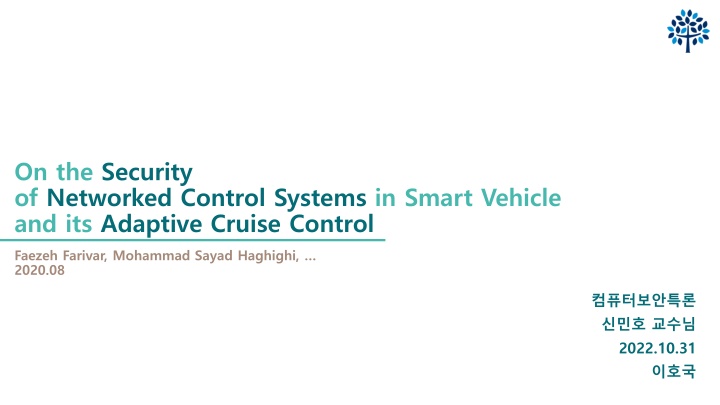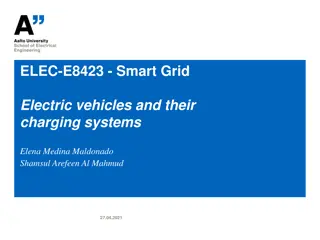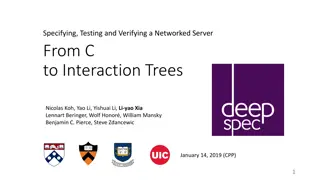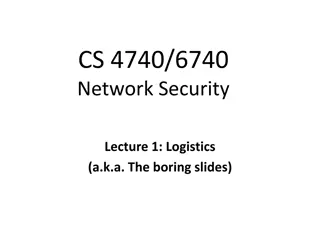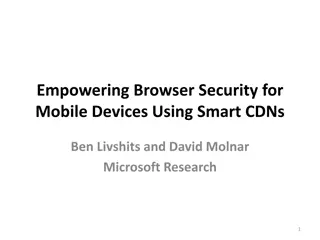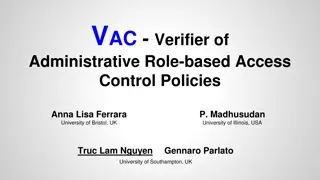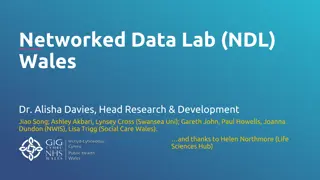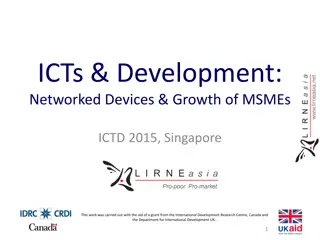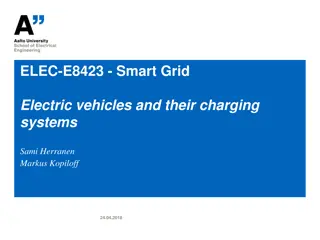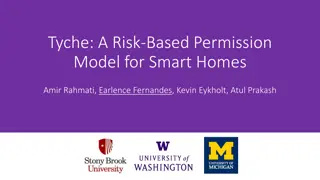Security Analysis of Networked Control Systems in Smart Vehicles
This paper explores the security challenges faced by networked control systems in smart vehicles, focusing on adaptive cruise control technology. It discusses the vulnerabilities in cyber-physical systems, such as intrusion detection systems, and highlights the potential risks posed by cyber attacks on interconnected systems like Controller Area Networks (CAN). The study also examines adaptive cruise control mechanisms and covert attack strategies within CPS, emphasizing the importance of safeguarding against malicious intrusions to ensure the safe operation of smart vehicles.
Uploaded on Sep 17, 2024 | 3 Views
Download Presentation

Please find below an Image/Link to download the presentation.
The content on the website is provided AS IS for your information and personal use only. It may not be sold, licensed, or shared on other websites without obtaining consent from the author.If you encounter any issues during the download, it is possible that the publisher has removed the file from their server.
You are allowed to download the files provided on this website for personal or commercial use, subject to the condition that they are used lawfully. All files are the property of their respective owners.
The content on the website is provided AS IS for your information and personal use only. It may not be sold, licensed, or shared on other websites without obtaining consent from the author.
E N D
Presentation Transcript
On the Security of Networked Control Systems in Smart Vehicle and its Adaptive Cruise Control Faezeh Farivar, Mohammad Sayad Haghighi, 2020.08 2022.10.31
Contents 1. 2. 3. 4. 5. 6. Introduction Problem Related Work Method Result Conclusion 2
[Introduction] Cyber Physical Systems Cyber Physical Systems ( CPS ) [ ], are usually mixtures of IT systems or networks and electro-mechanical entities. Self-driving cars Remote surgical robots Smart Power Grids 3
[Introduction] Intrusion Detection Systems Intrusion Detection Systems ( IDS ) [ ], are security systems that monitor the traffic coming in or going out of a network. Signature(Pattern)-based IDS Anomaly-based ISD Is build to spot anomalies in the world of the computer network. In CPS, without knowing the effect of physical system by each packet, one cannot judge about its maliciousness. 4
[Problem] Attack on CPS A simple cyber attack on one CPS can create a cascade of failures in a complex interconnected system. New vehicles (like smart vehicles) use Controller Area Network (CAN) bus to connect different micro-controllers. ( + IoV, VANET ) In 2015, two hackers demonstrate how to control Jeep Cherokee remotely by using car entertainment system. 5
[Related Works] Adaptive Cruise Control Adaptive Cruise Control ( ACC ) automatically adjusts the vehicle speed to maintain a safe distance from vehicles ahead. 6
[Related Works] Adaptive Cruise Control ACC has two Modes [Mode 1] Speed Control Mode The SPEED of ego vehicle is set to a driver-set speed as long as a minimum distance is maintained with the lead vehicle. [Mode 2] Space Control Mode The SPACE between two vehicles is controlled by changing the ego vehicle s speed so that two vehicles do not get closer than a safe distance. Either working mode can be enabled by the ACC system. 7
[Related Works] Covert Attack Covert Attack is a subset of deception attacks in which an attacker takes control of some parts of the CPS, but tries to keep the attack effect small enough so that it is not detected by human observers. 1. Create steady errors on the output of physical entity (exhaust or degrade the service performance over the time) 2. Create transient effects on the CPS output, repeatedly over a long period to achieve the same goal. 8
[Related Works] PID Controller PID Controller is a control loop mechanism employing feedback that is widely used in industrial control systems. Continuously calculates an error value e(t) as the difference between a desired setpoint (SP) and a measured process variable (PV) and applies a correction based on proportional, integral, and derivative term. Proportional : Controls the size of the error value in the current state. Integration : Acts to eliminate steady-state errors. Derivative : Reduces not the size of error, but the change rate of error. 9
[Methods] Attack Scenario We assume that the ACC system is prone to covert. The ACC loop is closed via in-car network that delivers the control and feedback signals. Attacker intrudes the ACC system and change its output. Disrupts the acceleration of the ego vehicle to change normal operation. We suppose two attack scenario. 10
[Methods] Attack Scenario - #1 1. Attacker compromises the ACC unit. 2. Attacker remains dormant and monitors the measured distance to the front vehicle while letting the ACC do its job. 3. When the distance is at its lowest (near the minimum safe distance), it creates a spike in the control signal and makes the vehicle accelerate. 4. Vehicle temporally lowers the distance less than safe distance and increases the speed. Chance of having accident is increased 11
[Methods] Attack Scenario - #2 1. Attacker compromises the ACC unit. 2. Attacker trivially lowers the ACC s reference distance ?????. (do not ambush for attack like scenario 1) 3. ACC is in mode 2 and tries to maintain the safe distance, following false reference. 4. Ego vehicle gets closer to lead vehicle than it really should be. Chance of having accident is increased 12
[Methods] Intelligent Intrusion Detection 13
[Methods] Intelligent Intrusion Detection [ Detection Algorithm ] Assume that there is an initial safe interval during which an identifier learns the CPS/plant dynamics. The initial safe interval is not unreasonable since vehicle is not hacked or infected by a worm as soon as it comes out of the factory. An intelligent identifier is used to construct a model of the CPS while it operates in the safe interval. The identifier we employ is an artificial neural network. IDS determines the detection threshold based on the residual error from neural network. 14
[Methods] Control Systems and Compensation Strategies [ Model Predictive Control ( MPC ) ] The MPC system controls the vehicle in the normal. If the IDS detects an anomaly, it means that an attack has happened. IDS switches from the main control system to the compensator in order to alleviate the effect of attack. 15
[Methods] Control Systems and Compensation Strategies [ P Controller (Proportional controller ) ] In this study, design P controllers to compensate the effect of covert attacks in the scenarios introduced before. 16
[Results] Attack Scenarios Assume situation Initial positions for the lead/ego vehicle is ?0,???= 10 (?) ?0,????= 50 (?) Initial velocities for the lead/ego vehicle is ?0,???= 20 (?/?) ?0,????= 25 (?/?) ????= 1.4 ? , ????????= 10 ? , ????= 30 ?/? , ????, ???= 2 ?/?2 ????, ???= 3 ?/?2 Attack is launched in t = 40 ? , 17
[Results] Attack Scenario - #1 18
[Results] Attack Scenario - #2 19
[Conclusion] Pros and Cons Study with practical materials or functions Effective in the sense that it both achieved detecting the covert attacks and mitigated their effects on the performance of tested vehicle. No details in attack methods and neural networks. Insufficient testcase 20
Q & A 21
